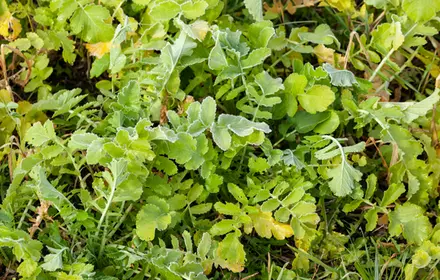Protecting Plants from Early Frosts

As autumn sets in and temperatures start to dip, early frosts can become a significant threat to your garden. These sudden cold snaps can damage or even kill plants, particularly those that are still actively growing or not frost-tolerant. However, by taking a few precautionary steps, you can protect your plants and keep them healthy as the weather cools.
Using Covers to Protect Plants
One of the most effective ways to shield your plants from early frosts is by covering them. Covers act as a barrier, trapping warmth from the soil and preventing frost from forming directly on the plants. Several types of covers can be used, depending on what you have available:
- Frost cloths or row covers: These lightweight fabrics insulate plants while allowing light and moisture to reach them.
- Household items: Old sheets, blankets, or towels can also be used in a pinch, providing a layer of protection during cold nights.
- Plastic covers: Clear plastic sheets can trap heat, but they should not touch the plants directly. Be sure to remove them during the day to prevent overheating.
To use covers effectively, place them over plants in the late afternoon or early evening, before temperatures drop. Secure the covers with stakes, rocks, or bricks to prevent them from blowing away. In the morning, once the frost danger has passed, remove the covers to allow sunlight and air circulation, which helps prevent moisture buildup and potential plant damage.

Mulching for Insulation
Mulching is another valuable technique for protecting plants from frost. By applying a thick layer of mulch around the base of your plants, you can insulate the soil, helping to regulate temperature and retain moisture.
Popular mulching materials include straw, hay, fallen leaves, and compost. Straw and hay provide excellent insulation and are easy to apply, while leaves are a natural and abundant resource in the fall. Compost not only insulates but also enriches the soil with nutrients.
To mulch effectively, spread a 5 to 10-centimetre layer around the base of your plants. This will help protect the roots from freezing. Be careful not to pile mulch directly against the stems, as this can lead to rot. While mulch retains moisture, it's important to check soil moisture regularly, especially during dry periods, to ensure your plants stay hydrated.
Additional Frost Protection Tips
In addition to using covers and mulch, consider these strategies to further protect your plants from early frosts:
- Watering: Water your plants in the afternoon before a frost is expected. Moist soil retains heat better than dry soil, keeping the air around the plants warmer overnight.
- Cloches and cold frames: These structures act as mini-greenhouses, trapping heat and providing a controlled environment. Cloches are ideal for individual plants, while cold frames can protect multiple plants or seedlings.
- Bringing potted plants indoors: If possible, move potted plants to a sheltered area like a garage or indoors when frost is forecasted. This offers immediate protection and reduces the risk of frost damage.
Make sure to protect your plants
Early frosts can be challenging for gardeners, but with a few simple steps, you can protect your plants and ensure they survive the colder months. By using covers, applying mulch, and employing additional protective measures, you can create a safer environment for your garden. Preparing now will help your plants thrive through the winter and emerge strong and healthy in the spring.



